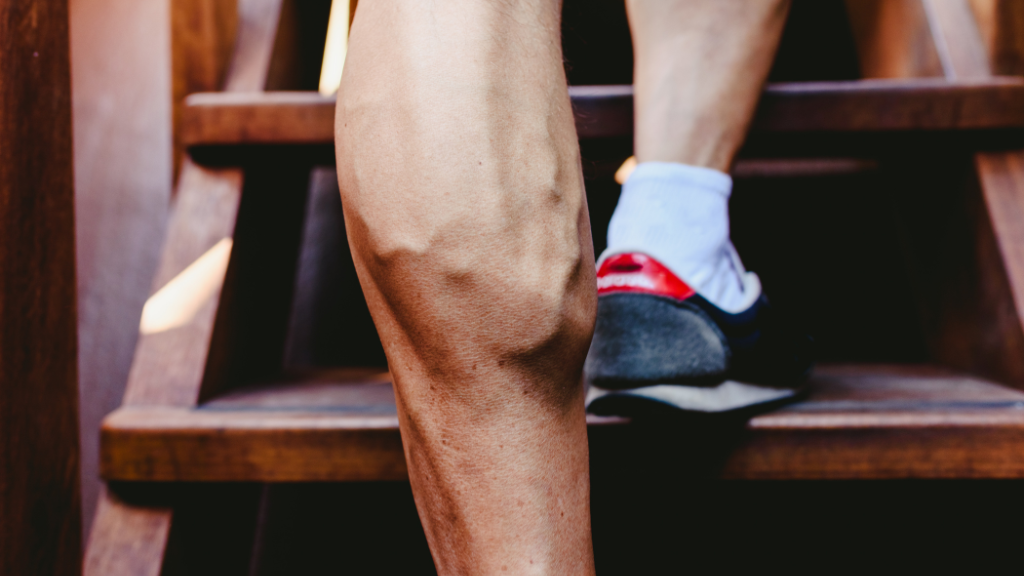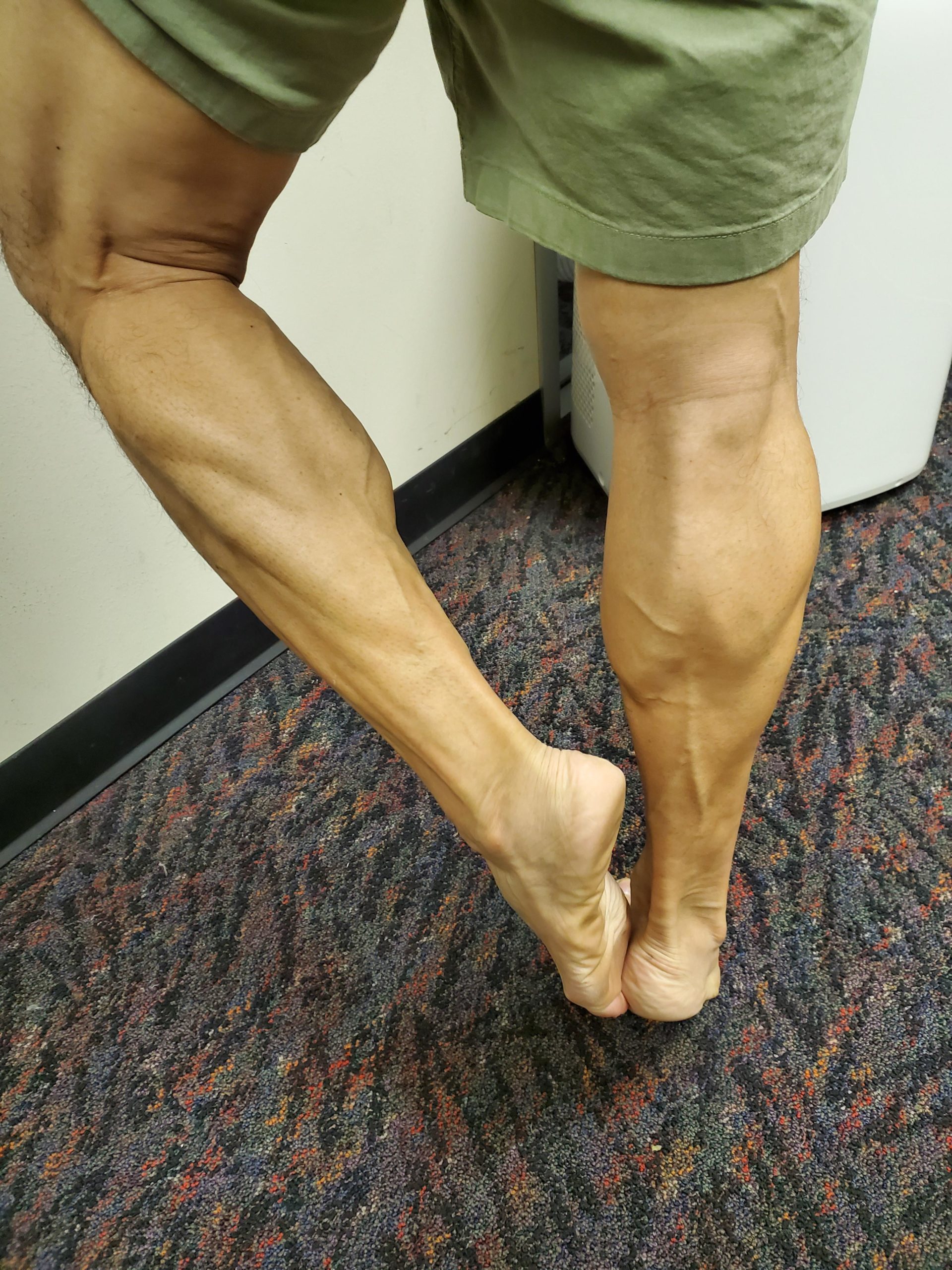Have you ever wondered why Asians tend to have big calves? It’s a common observation, but have you ever stopped to think about why this might be the case? Well, in this article, we’ll dive into the genetics behind big calves in Asians and explore the fascinating science behind it all.
You might have noticed that many Asians have naturally well-defined and muscular calves, even without actively working out. It’s a phenomenon that has puzzled researchers and scientists for quite some time. However, recent studies have shed some light on the genetic factors that contribute to this unique characteristic.
In this article, we’ll delve deeper into the specific genes that are believed to be responsible for the size and shape of calves in Asians. So, if you’re interested in learning more about the genetics behind big calves in Asians, keep reading!

Introduction to Big Calves in Asians
If you’ve ever noticed, Asians often have bigger calves compared to individuals of other ethnicities. It’s a distinct feature that has both fascinated and perplexed scientists and researchers for years. In this article, we will delve into the genetic factors that influence calf size in Asians, explore the role of environmental factors, discuss comparative studies, and analyze the implications of big calves in Asian populations.
Overview of Big Calves in Asians
Before we dive into the intricacies of calf genetics, let’s take a moment to appreciate the significance of studying this unique trait. Calf size in Asians has not only caught the attention of researchers but has also become a cultural fascination. Strong and well-defined calves are often associated with athleticism, resilience, and health. Understanding the genetic basis for this phenomenon can shed light on diverse fields ranging from sports performance to fashion trends.
Genetic Factors Influencing Calf Size
It’s widely acknowledged that genetics play a crucial role in determining an individual’s calf muscle development. Several genetic variations contribute to calf size, and Asians exhibit certain gene expressions that result in bigger calves. Research suggests that variations in genes involved in muscle growth and development, such as MYH1, MYH2, and ACTN3, impact calf size in Asians.
Impact of Genetic Predisposition on Calf Size
Genetic analyses have revealed that Asians possess a higher frequency of genetic variants associated with larger calf muscles. These genetic variations contribute to differences in calf circumference and muscle fiber composition. Although there is still much to learn about the specific mechanisms at play, it is clear that genetic predisposition significantly influences calf size in Asians.

Exploring Specific Genes Associated with Larger Calves in Asians
Scientists have identified specific genes that contribute to the development of larger calves in Asians. For example, the MYH1 gene encodes for a protein involved in type II muscle fiber development, which is associated with increased muscle mass. Research has also highlighted the role of the ACTN3 gene, which affects power performance and muscle strength. Further studies exploring the role of these genes in calf development can provide valuable insights into the genetic basis of calf size in Asians.
Environmental Factors and Calf Size
While genetics play a vital role, it’s essential to consider the impact of environmental factors on calf size. Physical activities, nutrition, diet, and even cultural aspects can contribute to calf muscle growth and overall size.
Influence of Physical Activities on Calf Muscle Growth
Engaging in physical activities that primarily involve the leg muscles, such as running or jumping, can contribute to calf muscle growth. Asians, particularly those living in countries with a rich cultural tradition of physical activities like martial arts, have historically been involved in such activities, leading to enhanced calf muscle development.
Effects of Nutrition and Diet on Calf Size
Proper nutrition is crucial for muscle growth and development. Research suggests that a well-balanced diet with adequate protein intake can positively influence calf size. It’s important to note that dietary patterns can vary across Asian countries, potentially impacting calf development. Further studies are needed to understand the specific dietary factors that contribute to larger calves in Asians.

Impact of Cultural Aspects on Calf Development
Culture plays a significant role in shaping lifestyle choices and physical activities. In many Asian cultures, calf development is highly valued and linked to notions of strength and beauty. Activities such as traditional dance forms and footwear choices, which may exert a specific demand on calf muscles, can further contribute to larger calves in Asians.
Comparative Studies: Asian vs. Non-Asian Calves
To gain a better understanding of calf size disparity, it is essential to compare Asian calves with those of non-Asian populations. Studies have revealed consistent differences in calf characteristics between Asians and individuals from other ethnicities. Asians generally exhibit larger calves with increased muscle mass and higher calf circumference. These comparative studies highlight the genetic differences that contribute to the unique calf size observed in Asian populations.
Contrasting Calf Characteristics between Asians and Non-Asians
When examining calf characteristics between Asians and non-Asians, it becomes evident that Asians tend to have larger calves. This difference is not solely attributed to genetics but also reflects variations in lifestyle choices, physical activities, and cultural factors.
Examining Genetic Differences Contributing to Calf Size Disparity
Research has shown that Asians possess specific genetic polymorphisms that contribute to larger calf size, which are not as prevalent in non-Asian populations. These genetic differences provide insights into the genetic basis of calf size disparity and highlight the need for further exploration.
Exploring the Metabolic Aspect
Metabolism plays a vital role in muscle growth, including calf development. Several metabolic factors are associated with enhanced calf muscle hypertrophy. For example, hormonal factors like growth hormone and insulin-like growth factor 1 (IGF-1) influence muscle growth and can contribute to bigger calves. Understanding the metabolic aspect of calf muscle development can provide valuable insights into the complexity of genetics behind calf size in Asians.
Inheritance Patterns and Heritability
To understand the complexity of calf size determination, it is important to investigate the mode of inheritance and estimate heritability. Studies have shown that calf size exhibits a multifactorial mode of inheritance, influenced by both genetic and environmental factors. Estimating the heritability of calf size in Asian populations can help determine the relative importance of genetic variations in determining calf size compared to other factors.
Investigating the Mode of Inheritance for Calf Size
Research suggests that calf size is a complex trait influenced by the interaction of multiple genes and environmental factors. Studies utilizing family-based and twin-based designs have shown that calf size exhibits a heritability value, indicating a significant genetic contribution to its variation within Asian populations.
Estimating Heritability of Calf Size in Asian Populations
Heritability estimates for calf size in Asian populations range from moderate to high. These estimates imply that genetic factors contribute significantly to the observed variation in calf size among Asians. However, the specific genetic variants and environmental interactions underlying this heritability remain areas of active investigation.

Implications of Big Calves in Asians
The significance of big calves in Asians extends beyond genetics and scientific curiosity. Cultural perceptions and beauty standards often favor well-developed calf muscles, which can influence self-esteem and body image. Additionally, there are practical implications for the footwear and fashion industry, with Asians having a higher demand for products that accommodate larger calf sizes.
Cultural Perceptions and Beauty Standards
In many Asian cultures, strong and shapely calves are considered attractive and desirable. These cultural perceptions shape beauty standards and influence individuals’ self-perception. Understanding the impact of cultural perceptions on calf development can provide insights into the broader context of beauty ideals in Asian societies.
Practical Implications for Footwear and Fashion Industry
The footwear and fashion industry plays a crucial role in accommodating diverse body types and sizes. Asians, with their relatively larger calf size, often face challenges in finding well-fitting boots, high heels, and other calf-hugging fashion items. Manufacturers can cater to this demand by developing inclusive options and sizing options that cater to different calf sizes.
Sports Performance and Calf Size
Calf size has implications for athletic performance in various sports. The size and strength of calf muscles can impact an individual’s ability to generate power and perform specific movements efficiently.
Effect of Calf Size on Athletic Performance
Calf size influences sports performance in activities that rely on lower limb strength, such as running, jumping, and sports involving explosive movements. The larger calf muscles in Asians can provide advantages in activities that rely on calf power and endurance.
Advantages and Disadvantages in Various Sports
While bigger calves can confer advantages in some sports, they may not always be beneficial. For certain activities that require agility and speed, larger calves may hinder performance due to increased muscle mass and reduced flexibility. It is crucial to consider the specific demands of each sport when assessing the impact of calf size on athletic performance.
Health Considerations
While big calves may be culturally desirable, it is important to consider potential health risks associated with their size. Muscle hypertrophy, especially if accompanied by increased body weight, can strain joints and lead to a higher risk of musculoskeletal issues.
Potential Health Risks Associated with Big Calves
Individuals with big calves may experience increased load and stress on the joints of the lower limbs. This can contribute to conditions such as knee pain, Achilles tendonitis, and plantar fasciitis. It is advisable to maintain overall physical fitness, maintain a healthy body weight, and perform appropriate exercises to minimize the risk of related health issues.
Mitigating Strategies for Maintaining Calf Health
To mitigate potential health risks associated with big calves, it is important to adopt strategies that promote calf health. These include maintaining a balanced exercise routine, incorporating flexibility and mobility exercises, practicing proper technique during physical activities, and seeking professional guidance when needed.
Conclusion
The genetic basis behind big calves in Asians is a fascinating topic that encompasses various factors, including genetic variations, environmental influences, and cultural perceptions. While genetic factors contribute significantly to calf size, it is essential to consider the interplay of environmental factors and the impact of culture on calf development. Further research is necessary to unravel the complexities of calf genetics and better understand this unique trait. Exploring the genetics behind big calves in Asians provides valuable insights that can extend beyond aesthetics, impacting fields such as sports performance, fashion, and health.




